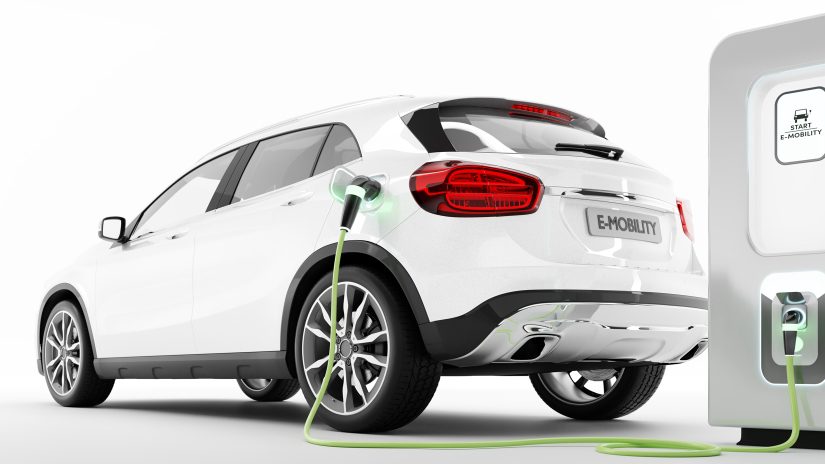The thermal runaway challenge in electric vehicle batteries
No matter the architecture of the pack, batteries are at risk of a thermal runaway event. It is the single most important safety problem of the lithium-ion battery.
Avery Dennison is committed to provide reliable, tailored and purposefully developed adhesive solutions fitted to a wide range of electric vehicle battery (EVB) use cases. It is important to comprehend the basics of thermal management before we can go into the specifics of how our pressure-sensitive adhesives enable advanced thermal protection.
In the EVB industry, heat management terms such as thermal runaway and propagation are being used interchangeably. As mitigation of thermal events – e.g. design and successful implementation of solutions – starts with an understanding of the problem that it solves, the following article sets out to explain thermal runaway and its underlying concepts.
3 key elements in dealing with thermal runaway
- Heat transfer to keep a cell at a consistent temperature to allow optimal functioning.
- Thermal barrier to prevent cells from being impacted by a neighboring cell on the onset of a thermal runaway event.
- Flame propagation barrier to prevent fire spreading and destroying cells and pack materials.
A second and third article will cover thermal protection (standards of testing) and Avery Dennison solutions to deal with thermal runaway, respectively.
Thermal runaway
Thermal runaway describes a chain reaction in which a damaged cell begins to release energy in the form of heat. Although it is especially likely in battery cells of low quality, it can be triggered by irregular activity – heating, crushing, penetration or overcharging –, malfunction or one-time defects in quality components as well.
Lithium-ion batteries generate a small amount of heat; however, when abnormal chemical reactions are triggered, the cell no longer has the ability to dispose of this heat. When the integrity or internal resistance is compromised, it can cause an internal short circuit. As the battery cell short circuits, the reaction creates extremely high temperatures as the energy stored is released suddenly. Left unchecked, the heat generated can cause a fire as the uncontrollable buildup of heat leads to further damage – hence the term ‘runaway’.
What happens in the cell is that the sudden and unwanted chemical reactions start replacing the stable, desired electrochemical reactions, generating excess heat and toxic gasses. A continuous ‘runaway’ loop is created in which the heat speeds up the reaction, creating more heat and gasses, and so on. If the cause is not mitigated, a domino effect is created in which batteries in close proximity are affected and the pattern is continued.
When thermal runaway occurs, the resulting undesired chemical reaction is hard to bring under control. Eventually, the toxic gasses are vented, either via blast caps on cylindrical and prismatic cells or when pouch cells burst, in a dark cloud of metal dust particles from the cathode, followed by a white vapor cloud as the gasses contain droplets of solvent as well. As oxygen mixes with the vapor and heat continues to build, the cell may even ignite.
Thermal propagation
In an EV battery pack, where multiple battery cells create a module, while multiple modules make up a pack, the same principle applies. When a battery short circuits through any type of abuse, the cells heats up. The temperature buildup ultimately exceeds the heat that can be dissipated to the cell’s surroundings, affecting nearby battery cells. That sequential occurrence of thermal runaway within a battery system triggered by thermal runaway of a single cell in that system is called thermal runaway propagation, or thermal propagation.
A thermal propagation test can be conducted to evaluate the influence of ignition or rupture in case of the thermal runaway due to an internal short circuit of a single cell. By understanding the intricacies of each stage of runaway, engineers can discover where to intervene in order to achieve safety goals.
Causes of thermal runaway
Physical damage
Crushing or penetrative damages can lead to short circuit between the anode and cathode, leading to a spike in current at that point in the cell.
Internal short-circuit
A lithium-ion cell contains a cathode and an anode that are physically separated by a membrane called the separator. Material defects can affect the separator’s integrity and can cause an internal short circuit.
Charging
Incorrect charging and discharging (or otherwise operating under abnormal conditions) leads to dendritic growth in the electrolyte, a neural-like network of metallic growth which can lead to short circuiting and capacity loss.
Temperature
The ideal storage and operating temperature for most batteries, including lithium-ion, is between 5 and 25 °C. Exposing a battery to higher temperatures can degrade battery’s performance and trigger thermal runaway.
The three stages of thermal runaway
Stage 1
The normal stage of the cell is altered due to internal or external factors (see: causes) and the internal temperature of the cell starts to increase.
Stage 2
As the separator melts, the solid electrolyte interphase (SEI) layer decomposes, and the anode is exposed. Chemical reactions generate excess heat and toxic gasses, causing a continuous runaway loop.
Stage 3
When enough gas and heat have accumulated, flammable organic electrolytes combust, leading to fires and even explosions.
Thermal management is key to improving performance, longevity and safety of batteries. EVB solutions from Avery Dennison are designed not only to bond, fasten and identify, but often to shield and protect.
